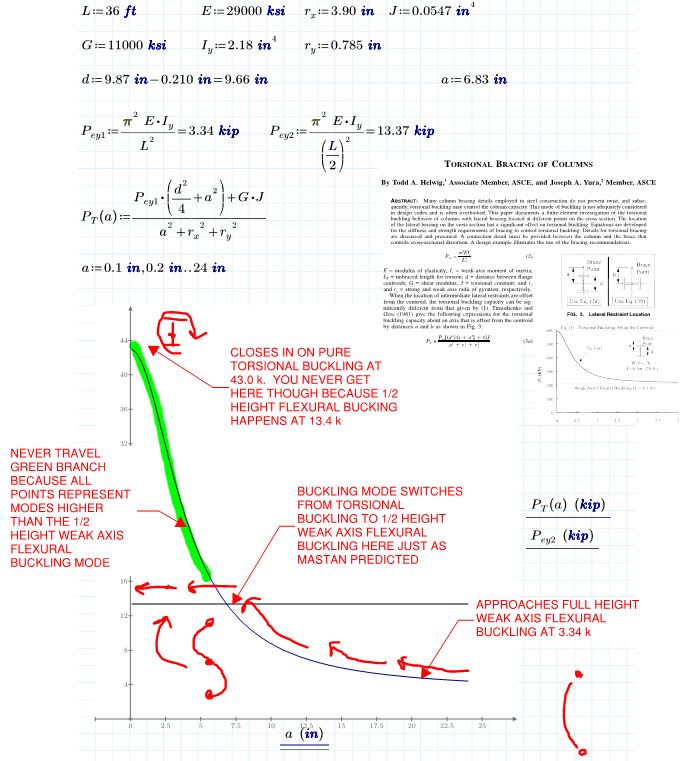Kookt said:
Are you telling me that the offset brace would affect behavior prior to the attainment of the weak axis Euler load in the absence of other imperfections?
That is EXACTLY what I am telling you. And that is exactly what you would expect in REAL world buckling even without imperfections. The change in the restraint position decreases the required energy to buckle the beam.
Kookt said:
It's not actually proof until after you run the models.
Well yeah well had run models just not the full set. And my phone which my last post was from doesn't have NASTRAN. BTW I removed my claim of running a 1mm model as the mesh size would get stupid to do that, so would the decimal places of difference. Anway here are my results.
MODEL: 31UB 10m, fully fixed ends, pure compression (200mm nominal mesh size setting, with refinements around necessary features)
RESULTS:
-Minor axis lateral brace on web at 5m, offset from beam central axis. Brace is at a point.
0mm OFFSET: 494.146kN
10mm OFFSET: 493.801kN
50mm OFFSET: 484.698kN
100mm OFFSET: 452.135kN
149mm OFFSET: 400.194kN (ON FLANGE RATHER THAN WEB)
(Note the last value 1.5% different from the one give a couple of hours ago. Once you change the mesh you are always going to expect differences.)
All these buckling shapes are the lowest energy mode and are largely of an S shape. 0mm offset gives a perfect S shape with no twist the S rotates around the restraint at 0mm. The rest have a degree of twist as the S now rotates around an offset restraint.
Of course all the caveats apply regarding 'models' but the point is that you keep the same model and move the restraint out you are going to get decreasing buckling loads in a monotonic fashion. There is no way around this given this is the lowest buckling mode AND you are reducing the effectiveness of the restraint for each fraction of a mm you move it away from the centroid. If you buckling analysis doesn't give results that behave in this manner then it isn't going deep enough to andequately address the nuances brought up in this tangent topic and possibly the topic as a whole.
NASTRAN is FEA buckling analysis thus it deals with a real 3D body, aka the precise shape affects the behaviour. Whereas (correct me if I'm wrong) Mastran relies on section properties, which alone can never fully describe a member.
Kootk said:
I might be able to get my hands on an educational version of NASTRAN. Can you send me dropbox links to your W10x12 beam and column models so that I can tinker with them?
You should be able to get 30days free.
Kootk said:
I know almost nothing about your modeling approach. Tell me about it if your think there's something that I need to know but don't.
FEA has been the brave new world of computerised modeling for decades now in many fields. Others can explain it far better than I can.
Of course like many 'models' it is not the real world. It is dependent on sensible inputs and sensible interpretation of outputs. However GOOD FEA has a better chance of approaching the real world than a few equations and a few characteristic properties of a section. This is especially so when things get non symetric.

